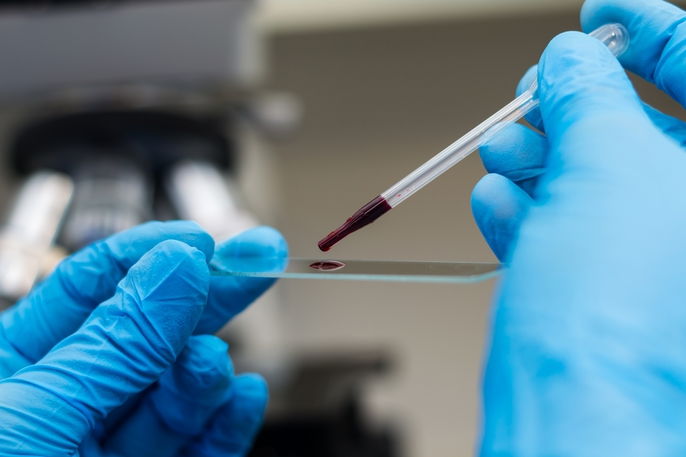The MCH blood test (mean corpuscular hemoglobin) measures the average amount of hemoglobin in a blood cell. It is typically ordered to determine the the type of anemia that a patient has, whether it is hyperchromic, normochromic or hypochromic anemia.
MCH blood test is ordered as part of a CBC (complete blood count) and is done by adding a reagent to a blood specimen and assessing the color it produces.
High or low MCH levels can occur with excess alcohol intake, thyroid disease and anemia. Therefore, it it important for the doctor evaluate an abnormal MCH result a physical assessment and other test results to determine the most appropriate treatment.

What do test results mean?
Your MCH blood test can come back with normal ranges, or it can be high or low:
1. Low MCH:
MCH levels less than 26 picograms in adults is a sign of hypochromia. Reagents added to the blood specimen will turn the red blood cells paler, which means that there is a reduced amount of hemoglobin in each red blood cell. Low MCH can occur with iron-deficient anemia, and thalessemia (which is a type of genetic anemia).
It is also common to note smaller red blood cells, or microcytic red blood cells. It is important for the doctor to evaluate a low MCH alongside other tests to identify the underlying cause.
Also recommended: Microcytosis: Causes, What It Means & Is it Serious? tuasaude.com/en/microcytosis2. High MCH
In adults, MCH levels that are above 34 picograms is a sign of hyperchromia. The reagent added to the blood specimen will make the red blood cells darker, which can happen as a result of alcohol intake, medications or thyroid problems,
It is also possible to note larger red blood cells than normal. This can happen with megaloblastic anemia, which is caused by a vitamin B12 and folic acid deficiency.
Learn more about other blood tests for anemia that your doctor can order.
Reference ranges
Normal MCH levels will vary with age and gender, which can be verified below:
- Newborn: 27 - 31 picograms
- 1 to 11 months: 25 - 29 picograms
- 1 to 2 years: 25 - 29 picograms
- 3 to 10 years: 26 - 29 picograms
- 10 to 15 years: 26 - 29 picograms
- Men: 26 - 34 picograms
- Women: 26 - 34 picograms
These values indicate the coloring that a red blood cell has, or how it reacted to the reagent. A red blood cell will become pale with a low MCH, or darker with a high MCH.






























